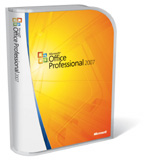Yup, you can try the 2007 Microsoft Office System.
Try out your choice of suites or programs from the 2007 Microsoft Office release for 60 days! Trial programs contain the same functionality that you get when you buy the perpetual versions-but only for a limited time.
You need Microsoft Windows XP with Service Pack (SP) 2, Windows Server 2003 with SP1, or later operating system. 512 MB RAM or higher recommended for Instant Search. And 1.5 GB hard disk space.
So what is a trial Microsoft Office 2007 version?
According to Microsoft site A Trial version allows you to evaluate the 2007 Office release for a limited amount of time, typically 60 days. To use the Trial version, you must activate the software the first time you run it. Otherwise, the Trial version runs in Reduced Functionality mode. In Reduced Functionality mode, your software behaves similarly to a viewer. You cannot save modifications to documents or create any new documents, and additional functionality might be reduced. No existing files or documents are harmed in Reduced Functionality mode. Full functionality returns when you activate the software.

Microsoft has created a separate website for downloading trial software. You can convert from the trial software to a full-version either before or after your trial period ends.
